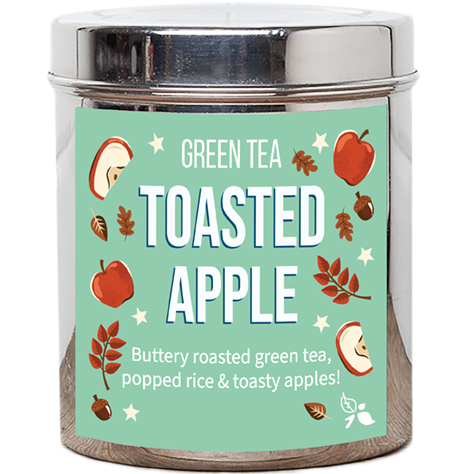WHAT IS GREEN TEA?
Green tea, like all teas, comes from the Camellia Sinensis plant but is unique because it does not go through an oxidisation stage (like black tea). It is also dried in a very gentle manner so it retains a lot of its natural green leafy appearance as well having a fresh vegetal flavour profile.
Green tea is grown in many countries but the majority of green tea comes from Asia.
Green tea is often considered the ‘healthy’ tea, especially compared to other types of teas. This is because the gentle processing mentioned above allows it to retain a lot of its nutrients & antioxidants, as well as containing less caffeine than most other teas.
WHAT ARE THE BENEFITS OF GREEN TEA?
We get this question a lot from our customers, along with questions like: ‘Does green tea contribute to reducing fat or aid weight loss?’
Green tea has been consumed for thousands of years for its believed health benefits. What we can say for certain is that green tea does contain more nutrients, minerals and antioxidants than nearly all other tea types. It also contains much less caffeine than most hot drinks.
There has been research into green tea and its effect on metabolism, weight loss and fat burning, especially when consumed in Asian diets and this has led to green tea extracts being used in a lot of health supplements & holistic medicine.
DOES GREEN TEA CONTAIN CAFFEINE?
Yes, green tea does contain caffeine, but a lot less than most other drinks and is safe to drink every day. Caffeine levels in an average 8oz. cup of green tea is around 25mg of caffeine (compared to 100-200mg in a cup of coffee, or 50-70mg in a cup of black breakfast tea).
Is it OK to drink green tea daily? Yes! The recommended daily caffeine limit is 300mg, or 200mg during pregnancy, which is roughly 8 cups of green tea a day. What is the best time to drink green tea? You can drink green tea at any time of the day as the caffeine levels are low, and the caffeine is absorbed in a much gentler way so they won't disturb your sleep.
A good thing to note is that most of our *green teas* are blended with other ingredients, like fruit or mint, so they have even less caffeine than a ‘pure’ green tea.

Why do different teas contain different levels of caffeine? All teas come from the same plant, Camellia Sinensis, but their variation in caffeine level (as well as their flavour & aroma) is determined by which part of the plant the leaves are picked from, at what time of year and how the leaves are processed after they are picked.
There are hundreds of green tea varieties but the most common production methods are to steam, pan fry or gently oven bake the leaves to produce their unique flavour profiles. A few easy tips to help you choose the green tea blend for you: Japanese green tea would be typically steamed, which gives you almost an oceanic, fresh taste. Whereas Chinese green tea tends to be wok fried, or oven baked, giving it a more nutty flavour. Despite these different drying methods, nearly all green teas have the same low levels of caffeine.
WHAT IS THE HISTORY OF GREEN TEA?
Green tea is the oldest and original type of tea, with records showing it was being consumed thousands of years ago in China and later in Japan for medicinal and spiritual purposes.
It was believed green tea could aid with sickness and fatigue, and was also said to elevate the spirit. The ceremony of storing and serving the tea became an important part of spiritual celebration and traditional tea ceremonies are still performed to this day.
During the 17th century green tea was discovered by European traders who started to import it back to Europe via the tea, spice & coffee trade routes. This discovery was also the catalyst for various European Empires setting up their own tea plantations in colonised territories like Africa & India, eventually leading to the invention of the black breakfast tea market.
IS MATCHA GREEN TEA?
Yes, matcha powder is a type of green tea. Matcha is made using ground green tea leaves and most cups of matcha contain the equivalent to 10 cups of regular green tea.
This means one serving of matcha contains the same amount of caffeine content as a double espresso. However, it's slow release caffeine which means it keeps you feeling energised for longer, with a sustained level of alertness, and crucially without any usual caffeine related jitters - the perfect coffee replacement if you ask us!
Matcha has also been enjoyed for hundreds of years for its supposed health benefits including boosting cognitive function, metabolism, increasing energy levels, and aiding alertness.
HOW DO YOU MAKE A CUP OF GREEN TEA?
So many of our customers tell us they don’t like green tea because it tastes ‘bitter’. Well, we’re here to tell you that green tea should never taste bitter, if you prepare it right!
Brew 1 heaped teaspoon of loose leaf green tea (or 1 tea bag) in 80° water for no longer than 3 minutes.
Why? Green tea needs to steep at a lower temperature so as not to burn the delicate tea leaves and to prevent it tasting bitter. Green tea is always enjoyed without milk.
Our green tea blends work wonderfully cold brewed too for a refreshing take on green tea - perfect for hydrating after the gym, or on a summer's day. Learn how to cold brew green tea here.











